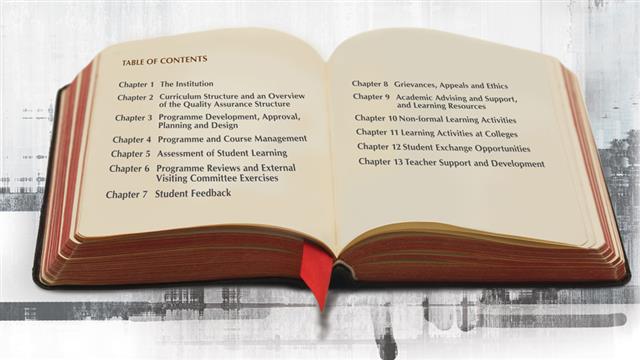Teaching is an art, and like artists, different teachers have different approaches to the performance of their art. For an institution like CUHK whose core mission is to provide quality education on a comprehensive scale, quality assurance of its teaching and learning functions becomes a necessity and an art in itself.
In 2008, the Chinese University was the first local institution to be audited by the Quality Assurance Council (QAC) of the University Grants Committee. QAC released its Report of a Quality Audit of The Chinese University of Hong Kong, compiled by a panel of independent experts, in September that year and made many commendations and affirmations of our quality assurance measures and institutional practice. In its words, 'CUHK is providing a high quality student learning experience that reflects its mission and role statement, underpinned by good quality assurance system.'
CUHK has not rested on its laurels, however. It has since continued to improve the quality of the education and the learning environment it offers, particularly but not exclusively for the new undergraduate curriculum that started in 2012. The Quality Manual is an offshoot and the natural product of such continuing efforts on the institutional level, now a user-friendly handle online for teachers, academic administrators and students alike.
Prof. Benjamin W. Wah, Provost of CUHK, said, 'The University's commitment to its key strength in quality teaching finds unequivocal expressions in its many well-established and structured quality assurance mechanisms that ensure high academic standards and student achievement of outcomes on the institutional, programme and course levels.'
The Quality Manual is worth reading from beginning to end, in addition to being repeatedly referred to from time to time. It can also provide a quick and comprehensive understanding of what has been put in place to ensure teaching quality and learning efficacy. Its appendices supplement with further information and materials that every dedicated teacher and administrator would have found useful.
The Manual touches upon and reaches down to every nook and cranny of a student's learning life in the University—classroom, college, extracurricular activities, off-campus learning, you name it. It provides signposts, maps and guidelines in academic planning, management and assessment.
It is particularly valuable to teachers who are new to the University or the profession. To someone freshly out of her PhD who takes her new teaching challenges seriously, the Quality Manual throws a thread that would lead her steadily through the maze of tertiary pedagogy. If she's also teaching a postgraduate course, she will find the part on assessing postgraduate students' coursework particularly useful (Ch. 5.3).
Not only will new teachers find the Manual useful, but veterans should also have many occasions to refer to and consult it. For example, very few teachers would pay much attention to disciplinary issues unless and until they are faced with specific cases. They will then find the sections on academic probation, discontinuation of studies and honesty in academic work (Ch. 5.3, 5.5, 5.6), and the various regulations and codes of practice mentioned therein of especial relevance in situations already fraught with difficulties and sensitivities. It is also indispensable to veterans who are tasked with developing new programmes and who want to benefit from accessing all the relevant policies and procedures at a glance (Ch. 3).
Prof. Isabella W.Y. Poon, Associate Vice-President of CUHK, is also the director of the Centre for Learning Enhancement And Research (CLEAR), one of the most important facilities in CUHK's nexus of quality assurance mechanisms and measures. She said, 'The Quality Manual documents existing policies and practices on quality assurance/enhancement implemented, in and applied to all programmes on the undergraduate and the postgraduate levels. It will be updated on a regular basis with feedback and input from all interested parties and units. It is my wish that the Manual will thus be made fitter and fitter for our purposes.'


